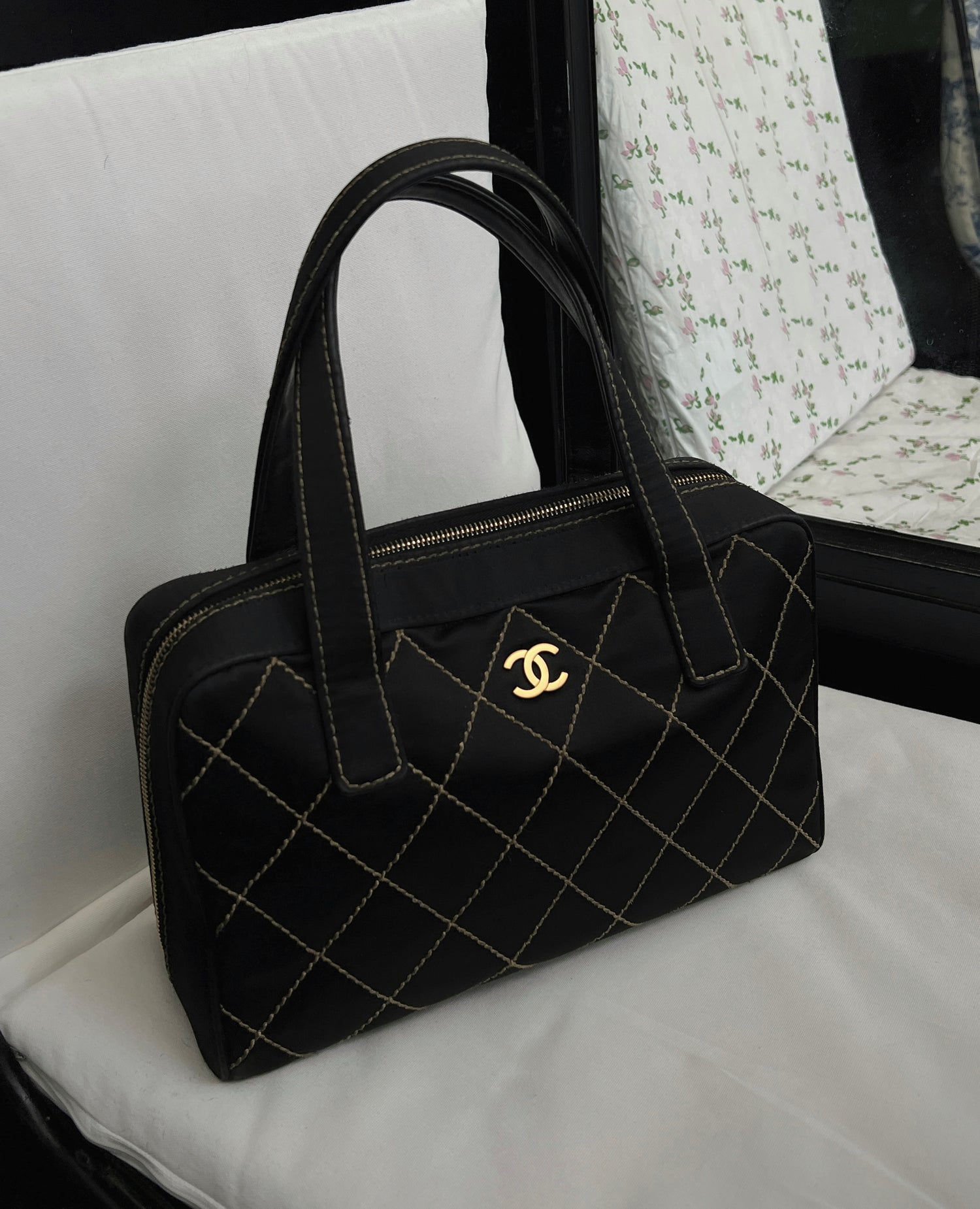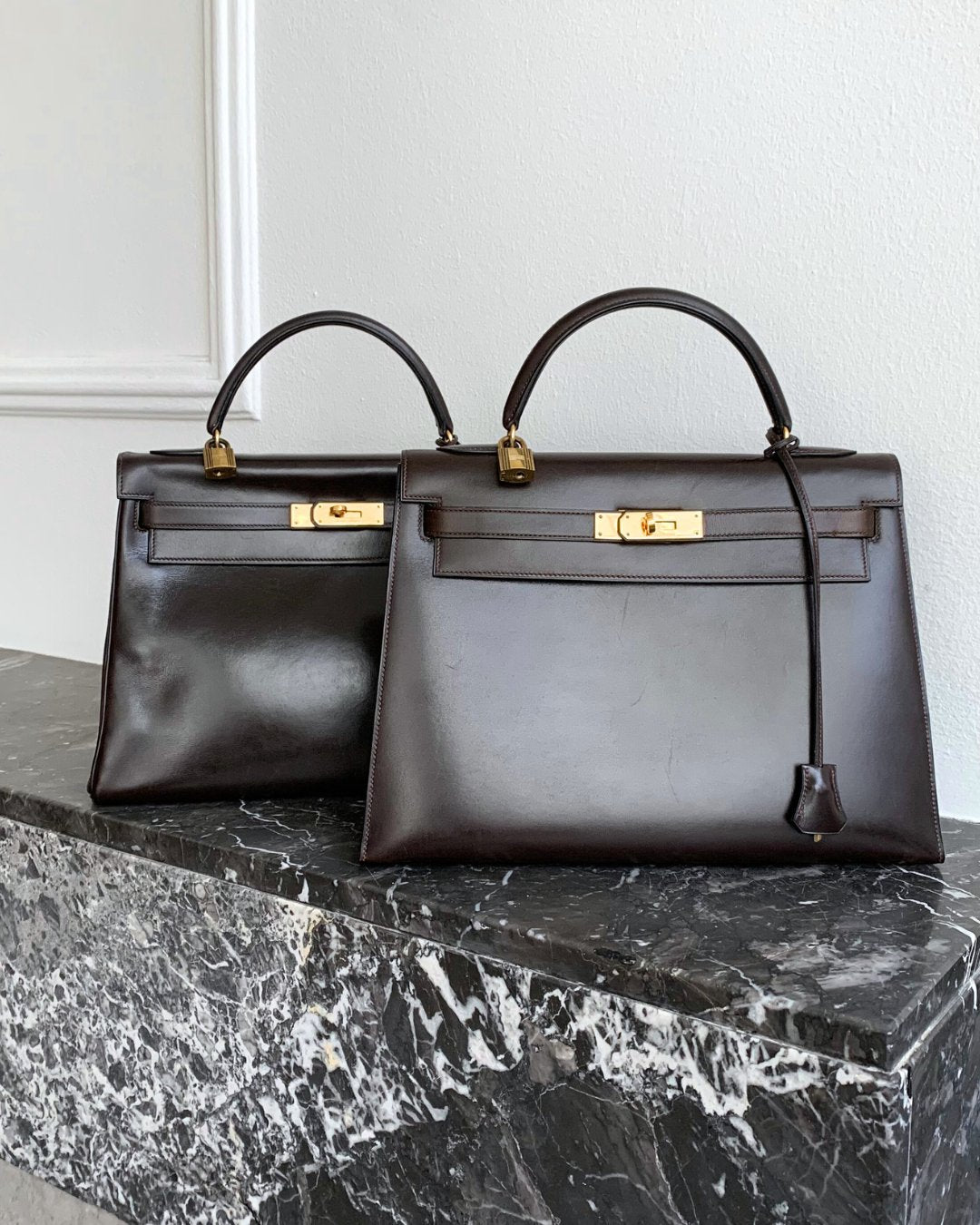The history of one of the most iconic luxury brands...
Being the second oldest luxury brand that is still operating today, it’s no surprise that Louis Vuitton has been one of the most valuable luxury brands in the world for decades.The story of Louis Vuitton started almost two centuries ago, when the founder was born in 1821 in a small village in the east of France, called Anchay.
Youth of Louis Vuitton
Louis Vuitton was born into a working-class family; his father was a farmer and his mother a milliner. When Louis was 10 years old, his mother passed away and his father soon remarried. The story is that his new stepmother wasn’t a very nice person, and that she is one of the reasons Louis decided to leave his hometown. In the Spring of 1935, at only 13, Louis started his two years long journey of traveling to Paris. He travelled 470 kilometers (293 miles) by foot, taking jobs along the way to keep himself alive. Finally arriving in Paris, he was 16 years old, and soon got the opportunity to apprentice at the successful box-making and packing workshop of Monsieur Maréchal, where he ended up working for 17 years. Quickly Louis gained a reputation as being one of the best in this field. When in 1852 Napoleon III gained the title of Emperor of France, his wife, Eugenie de Montijo, hired Louis Vuitton as her personal box-maker and packer. This was the entry into an entire new clientele of the royal and elite, so business was going great for Louis Vuitton.

Louis Vuitton and factory workers 1888 - by LVMH
Box and Luggage making success
In 1854, he married Clemence-Emilie Parriaux, with whom he later started a family. The same year, he left Monsieur Maréchal to open his own box-making and packing workshop in Paris. This first shop was located on 4 Rue Neuve-des-Capucines in Paris, France, and marks the official start of Louis Vuitton as a business.
The sign outside of Louis Vuitton’s very first workshop read: “Securely packs the most fragile objects. Specializing in packing fashions”.
With his own workshop he started making his own creations and designs. He, for example, started using canvas instead of leather, which made the trunks waterproof and very durable. In 1858, the business gained even more popularity with the introduction of rectangular trunks. This was revolutionary for the time, because this made is possible for the trunks to be stacked unlike the “normal” rounded topped trunks. In 1859, Louis was able to expand his business with a second, bigger workshop in Asnieres, a village outside of Paris.
Setbacks
Because of the popularity of all Louis Vuitton designs, the company suffered from plagiarism a lot. To overcome this Louis started using beige and brown stripes in his designs, a big change from the “old” grey. The Franco-Prussian War from 1870-1872 made for a setback in Louis Vuitton’s career. His entire business was destroyed, but he managed to re-establish the business, set up a new workshop on 1 Rue Scribe, in central Paris, and the business grew even bigger than it was before the war. In 1885, Louis Vuitton opened its first shop outside of France, on Oxford Street in London. With the growing popularity the plagiarism also got worse, forcing Louis Vuitton to create a new design once again. In 1888, the “Damier Canvas” pattern was created, including the trademarked logo reading “marque L. Vuitton déposée”. For another 20 years, Louis Vuitton kept creating innovative, high-quality luggage, until he passed away when he was 70, in 1892. He left his only child, his sons Georges Vuitton, in charge of the company.
 The Louis Vuitton building on Champs-Élysées, Paris and the workshop on 1 Rue Scribe, in central Paris - by Icon Icon and Yoogi's Closet
The Louis Vuitton building on Champs-Élysées, Paris and the workshop on 1 Rue Scribe, in central Paris - by Icon Icon and Yoogi's Closet
The next generations
While Georges was in charge of the company, he always made sure to honor his father’s way of thinking, while always innovating. As head of Louis Vuitton, George created and changed many aspects of the company, making it the successful luxury company we still know today. One of Georges’ major creations is the famous classic Monogram Canvas, with its diamonds, circles, and flowers. This design was first introduced and trademarked in 1896. He also started a campaign to transfer the business into a worldwide corporation, travelling to major cities (mainly in the USA) to sell Louis Vuitton products. Next to this Georges is responsible for the innovation of trunk locks, the start the “Le Voyage”-book series, and for creating VIP trunks to be gifted to the most loyal Louis Vuitton customers. He opened the “Louis Vuitton building” on the Champs-Élysées in Paris, in 1914, which became the largest travel-goods store in the world. And he started expanding the business, designing other travel bags (next to trunks) before passing away at age 79, in 1936. Once again, the family business was passed down, this time to Georges’ eldest son Gaston Vuitton.
Creating iconic bags and expending the business
Throughout the 1900s Louis Vuitton really expanded their business, as they started introducing bags and items next to their famous trunks. One of the first ever bags designed was the big travel bag; the Keepall in 1930, followed by the smaller version the Speedy in 1932, which was Louis Vuitton’s first handbag designed for everyday use. Bags like the Noé, Alma, and Papillon followed, and are still iconic to this day.
 Some iconig Louis Vuitton bags - by Etoile
Some iconig Louis Vuitton bags - by Etoile
In 1959 Louis Vuitton was able to re-invent their classic canvas, thanks to new technologies. A more supple version of the canvas was created, and this meant it could be used for smaller, more detailed products. Between 1945 and 2000 Louis Vuitton extended their collection with several categories, making products like small purses, wallets, and accessories.
In 1970 Gaston Vuitton passed away, and his son-in-law, Henry Racamier, took over the company. He recognized the immense popularity of the brand, and made sure to open more shops all over the world. Another milestone was reached in 1987. Louis Vuitton, Moet & Chandon, and Hennessy decided to join forces, and merged to form the luxury goods conglomerate LVMH.
The first creative director
It was only in 1997 when Louis Vuitton appointed their first ever Creative Director. The American fashion designer, Marc Jacobs, who previously worked for Balenciaga, was hired to introduce Louis Vuitton tot the fashion world. He was hired to design men’s and women’s ready-to-wear collections, and within a year he released his first collection.
 Marc Jacobs, Louis Vuitton's first Creative Director is responsible for their step into the fashion world - by Louis Vuitton
Marc Jacobs, Louis Vuitton's first Creative Director is responsible for their step into the fashion world - by Louis Vuitton
Thanks to Marc Jacobs as the creative director, the first decade of the new century was all about launching new products. The first piece of jewelry was released in 2001, with a watch collection in 2002. He introduced the Monogram Multicolor canvas range, as well as the Monogram Vernis and Damier Graphite collections. Marc was responsible for several Louis Vuitton collaborations with other designers, in addition to helping gain a strong celebrity following, which let to many actors, musicians, and models that have been the face of Louis Vuitton. Celebrities like Madonna, Angelina Jolie, Bono, Keith Richards, and Scarlett Johansson have all been associated with Louis Vuitton.
Selena Gomez and Emma Stone in their ad campaigns for Louis Vuitton - by Refinery29 and Designscene
Marc Jacobs decided to step down as creative director in 2013, so he could focus on his own brand (he did this with the help of LVMH). His position as Creative Director at Louis Vuitton was filled by three different designers; Nicolas Ghesquière took over the design of women’s collections, Kim Jones became responsible for menswear, and Darren Spaziani was appointed to run luxury leather goods. American fashion designer Virgil Abloh became the new artistic director of menswear in 2018. Currently, Virgil Abloh and Nicolas Ghesquière are still in charge of designs at Louis Vuitton, and they continue to create highly sought-after items, focusing on innovation and forward-thinking designs.
Today
Louis Vuitton remains one of the most popular luxury brands in the world, and we don’t see this changing any time soon. They have been known to create limited edition collections every season, and they regularly collaborate with various artists and designers, creating even more unique items. This in combination with all of the iconic items the brand has created over the years, makes it incredibly excited to see which amazing vintage pieces we can find. Are you interested in finding a Louis Vuitton items? Check out our collection or send us a message!
With love, Jessica
Sources
Louis Vuitton
Biography.com
VOGUE
Thefamouspeople.com
Catwalk yourself
LVMH
Rebag
Fashionnetwork






